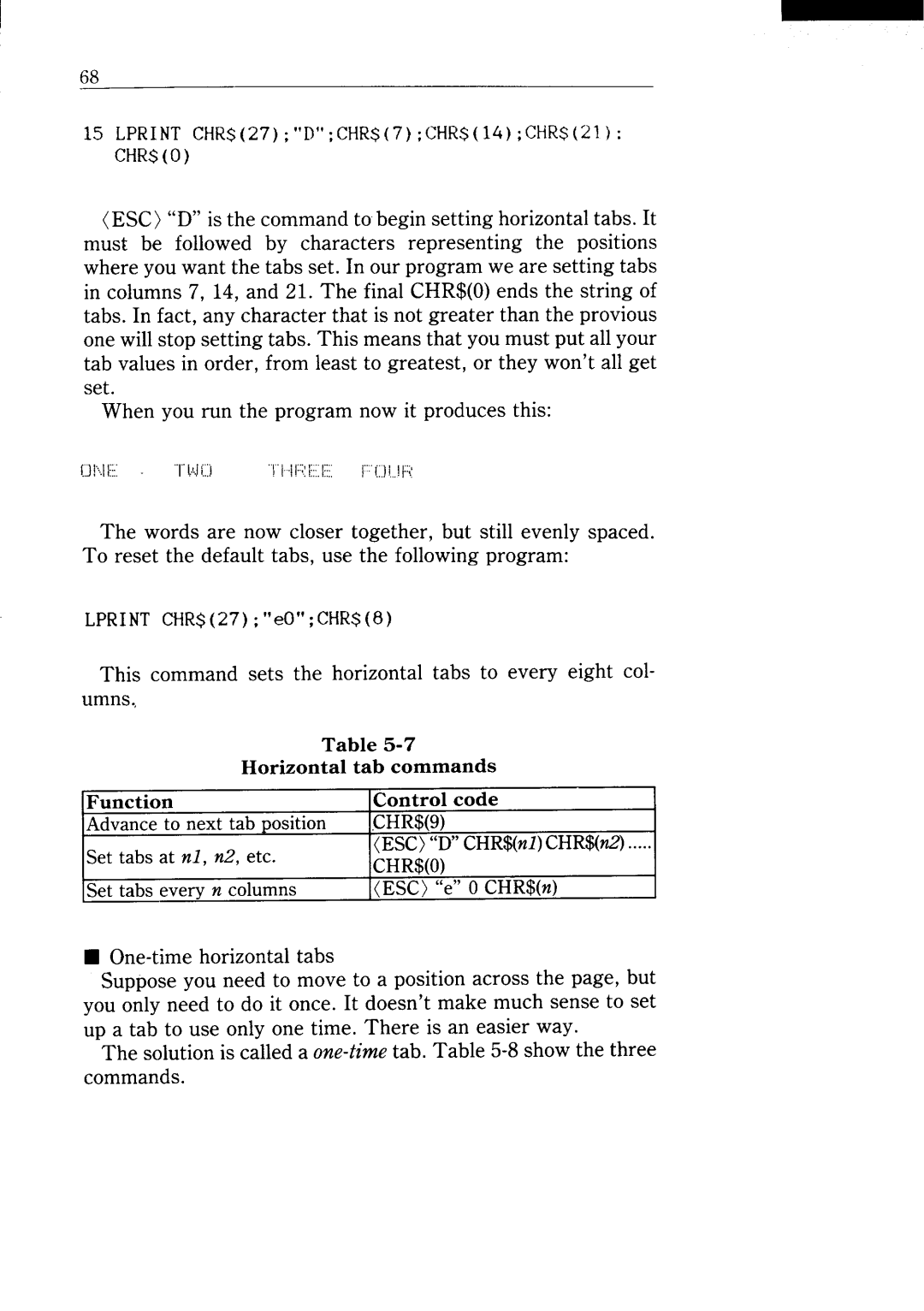
68
15LPRINT CHR$(27);“D”;CHR$(7);CHR$(14);CHR$(21): CHR$(O)
(ESC) “D” is the command to begin setting horizontal tabs. It must be followed by characters representing the positions where you want the tabs set. In our program we are setting tabs in columns 7, 14, and 21. The final CHR$(0) ends the string of tabs. In fact, any character that is not greater than the previous one will stop setting tabs. This means that you must put all your tab values in order, from least to greatest, or they won’t all get set.
When you run the program now it produces this:
The words are now closer together, but still evenly spaced. To reset the default tabs, use the following program:
LPRINTCHR$(27); “eO”;CHR$(8)
This command sets the horizontal tabs to every eight col- umns.,
Table | ||
Horizontal tab commands | ||
Function | Control code | |
Advancetonexttabposition .CHR$(9) | ||
Settabsatnl,n2,etc. | (ESC) “D”CHR$(nl)CHR$(nL’) | |
CHR$(0) | ||
| ||
Set tabs every n columns | (ESC) “e” OCHR$(n) | |
■
Suppose you need to move to a position across the page, but you only need to do it once. It doesn’t make much sense to set up a tab to use only one time. There is an easier way.
The solution is called a
